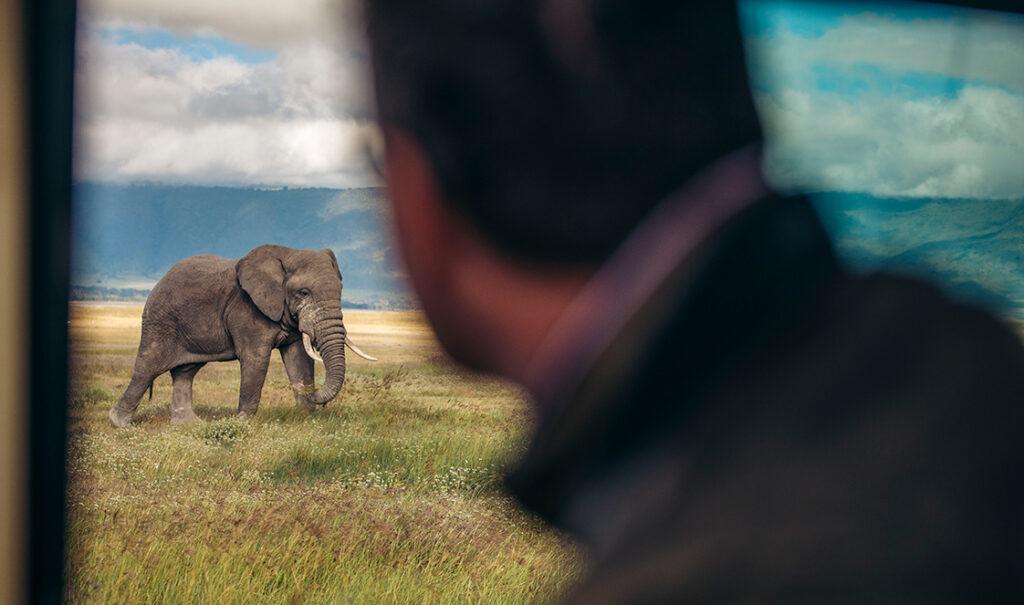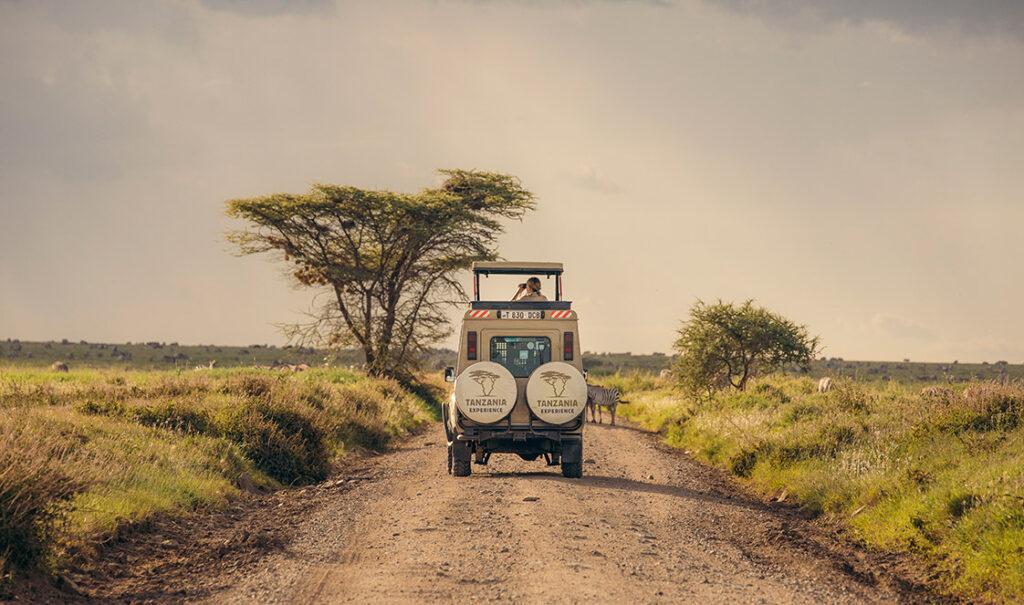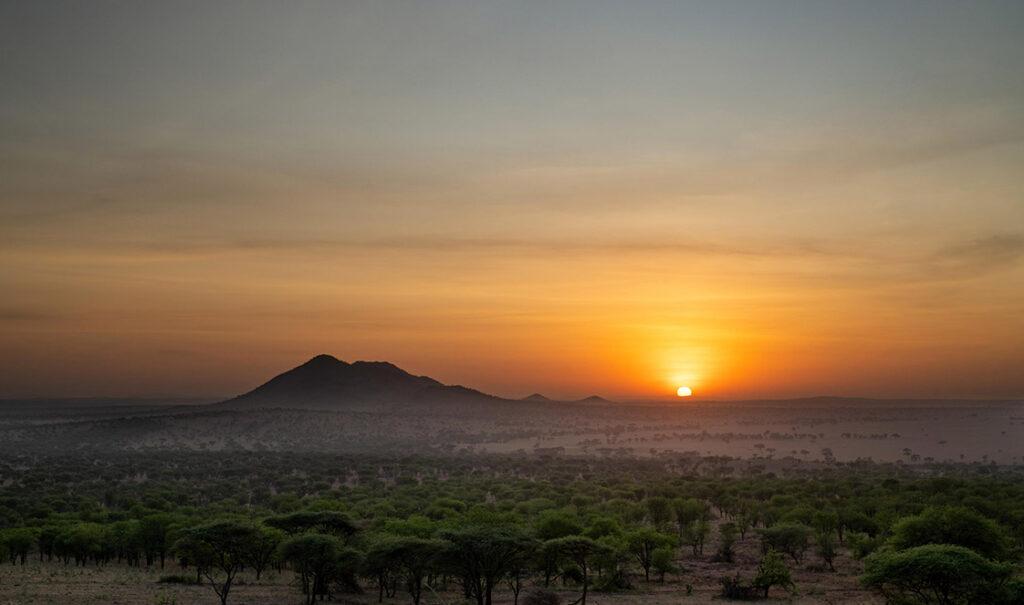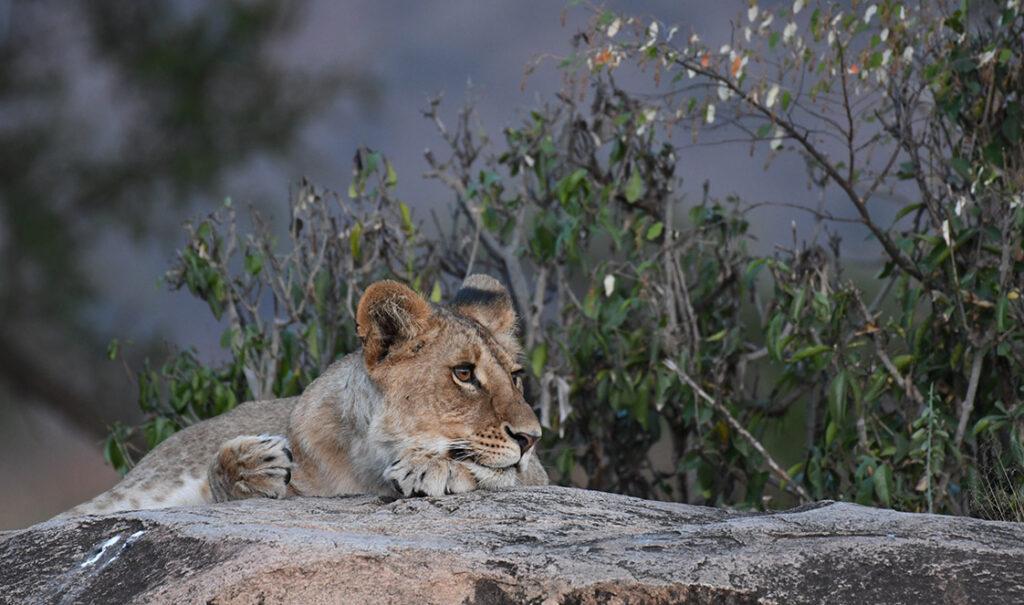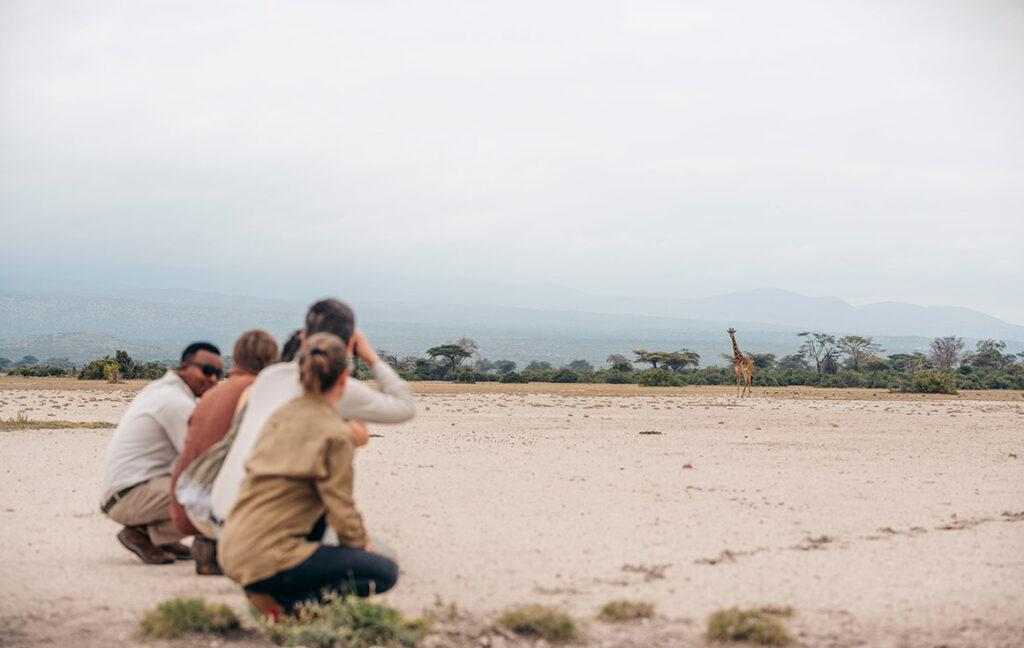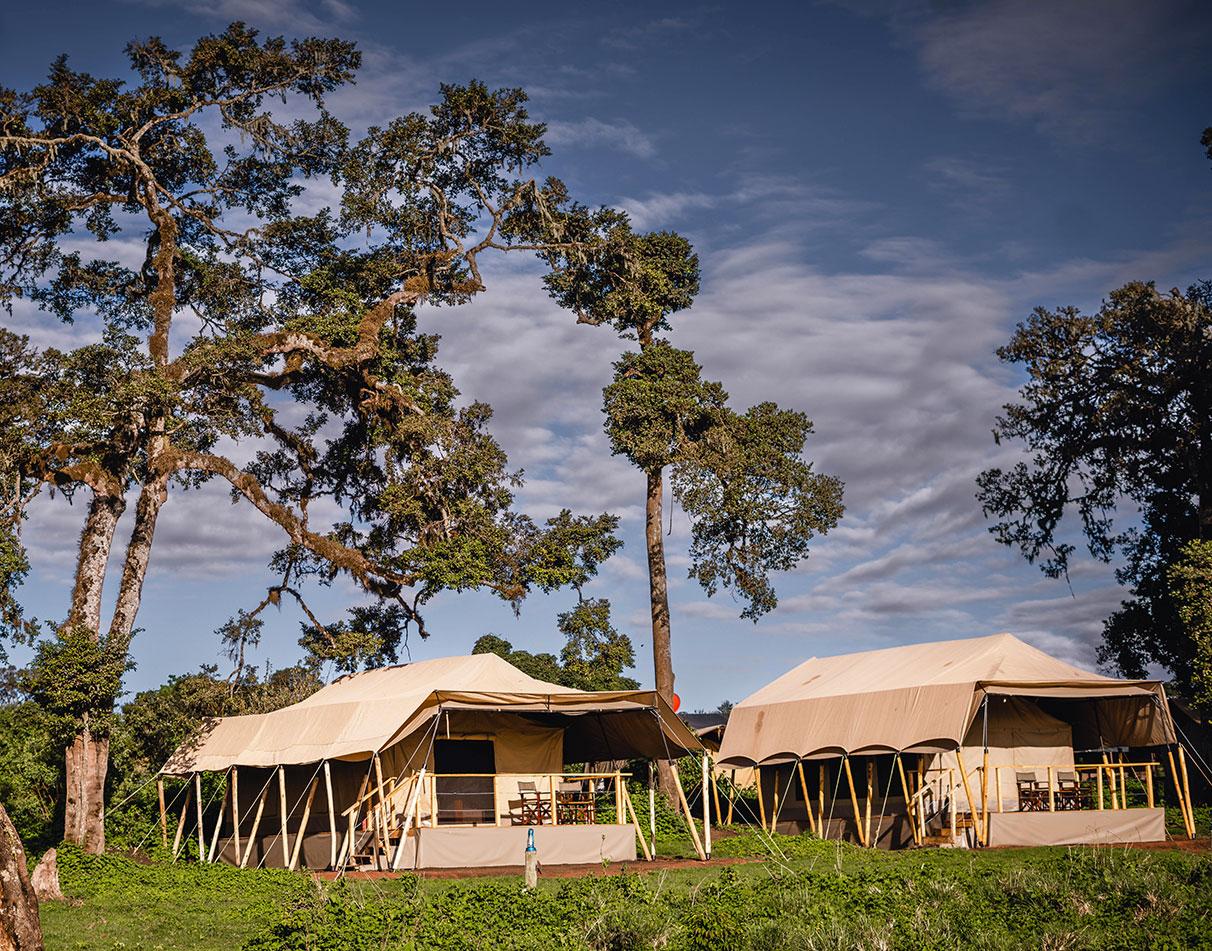Ngorongoro Crater & Conservation Area
Conservation Area: 8292 km2 (3201 mi2) | Crater: 260 km2 (100 mi2)
1959
year-round
Like a pot of gold
Anywhere between 25,000 and 30,000 animals of 115 species live on the floor of the Ngorongoro Crater and along its densely forested crater walls. Like a pot of gold, filled with shimmering grass, dotted with lions, herds of buffaloes, zebras, and wildebeest, shy caracals, lounging hippos and elegant flamingos. It’s a glamorous place in the animal kingdom, a place of abundance and awe. It truly is one of its kind – the largest unbroken caldera in the world and a wildlife spectacle.
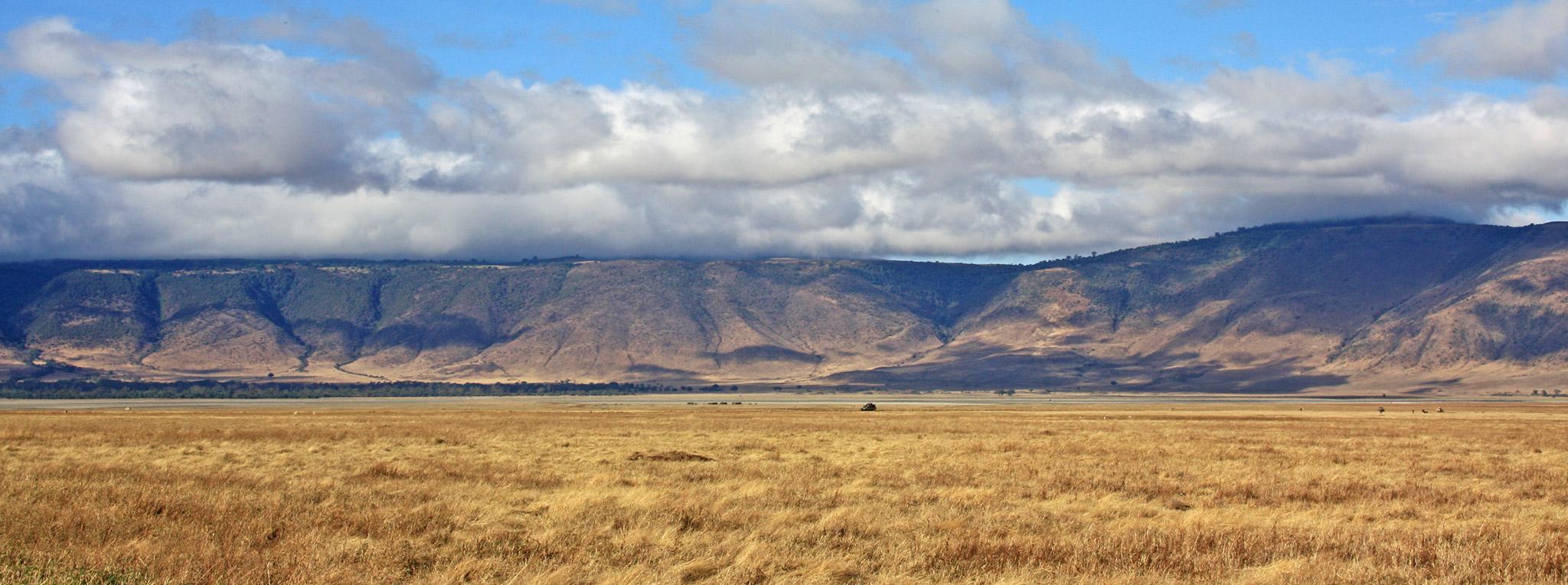
Ngorongoro Crater: A place of unparalleled beauty
The feeling of anticipation as you descend the narrow road into the Crater is unlike anything you’ll experience in other protected wildlife areas. It’s not only one of the best places for wildlife sightings on the continent, but also a place of uniqueness, wonder, and abundance, leaving you in awe of the natural world.
The Ngorongoro Crater is the world’s largest unbroken, inactive, and unfilled caldera. With a diameter of approximately 19 km (12 miles) and its majestic walls that rise just over 610 m (2000 feet), the crater floor covers an area of 260 sq km (100 sq miles). Over 30,000 animals, including the rare black rhino, are part of the Big Five that call this unique place their home. The Crater was formed when a gigantic volcano – said to have been as high as Mt Kilimanjaro – erupted and collapsed about 2.5 million years ago.
Today, the crater floor is covered by various landscapes, ranging from dense mountain forests and woodlands to grasslands, lakes, and swamps. Water sources include the two main rivers, Munge River in the west and Lerai River in the east as well as the Ngotokitok spring that spills into a swamp.
Huge herds of ungulates dominate the crater floor, with zebras, wildebeests, elands, Grant’s and Thompson’s gazelles as the species most commonly seen. But the crater is also home to the Big Five, and elephants, lions and buffaloes are often spotted. Leopards are rarely seen as they prefer staying in the forests on the crater rim. The very rare black rhino is also at home in the crater, and sightings are fairly common. Serval cats, spotted hyenas and jackals are also often seen, while cheetahs are more difficult to spot.
But it is not only mammals that reside here. You can see a great number of lesser flamingos at Lake Magadi, a primarily alkaline lake. Other common birds include ostriches, Kori bustards, crowned cranes, white-backed vultures, black kites, cattle egrets, tawny eagles, augur buzzards and many more.
A walk along the Ngorongoro Crater rim accompanied by a ranger takes visitors on a trail created by livestock. The trail passes moss-covered trees and Masai bomas, offering breathtaking views of the crater below. It’s one of the few popular wildlife areas in Tanzania, where you can experience your surroundings on foot.
The famous Crater is part of the Ngorongoro Conservation Area, a large area of protected land. The Ngorongoro Conservation Area was officially declared a UNESCO World Heritage Site in 1979. The area consists of various landscapes and includes dense mountain forests, woodlands, grasslands, lakes, and swamps. Some of the most important archaeological sites in the world, such as Oldupai Gorge and Laetoli, are in the Ngorongoro Conservation Area. Archaeologists found evidence showing that the area was occupied by hominids over 3 million years ago, thus claiming that it could be the birthplace of mankind.
Today, over 40,000 Masai reside in the area, making the Ngorongoro Conservation Area one of the only places in Tanzania where human habitation is allowed within a wildlife-protected area. The conservation shares a boundary with the Serengeti National Park, and you need to drive through the conservation in order to get to the Serengeti.
There are no accommodation options located at the bottom of the Crater floor. You drive into the Crater for game drives during the day but drive back up before the sun sets. There are a few exclusive lodges and camps, as well as one campsite along the Crater rim overlooking the caldera. Staying here grants you the view of a lifetime and an unforgettable sunset.
However, most accommodation options are located close to the small town of Karatu in the Ngorongoro highlands. You can stay at coffee plantations and beautiful manor houses overlooking coffee fields and rolling hills. It does take about an hour to drive from Karatu to the Crater. And while this means you won’t be the first to reach the Crater floor for your game drive in the morning, you will still have an amazing safari experience – and an accommodation that’s friendlier on your wallet too.
UNESCO World Heritage Site
The Ngorongoro Conservation Area is recognised by the UNESCO for its natural as well as its cultural heritage.
The Big Five
The Ngorongoro Crater is a Big Five destination. Even the rare black rhino is spotted here.
Shoulder Season Travel
During the high season, the Crater can get very busy with visitors. We recommend travelling in the shoulder or low season for a more intimate experience.
WHEN TO GO
Best time to go to the Ngorongoro Conservation Area
The good news: No matter the month, wildlife viewing in the Ngorongoro Crater is great! There are a few things to consider when choosing the travel time that’s best for you personally though. July to September is peak travelling season in Tanzania. This is because it’s the dry season which means sunny weather, dry roads and short grass – all important conditions for successful wildlife sightings. That being said, it also means the Crater floor will get busy and you will have to share sightings with quite a number of other safari vehicles. If you are looking for a more intimate experience, consider the rainy season months April and May. Vegetation is lush and green and it’s the only time of the year the Crater is less busy. When choosing the best time to travel, do consider the other national parks you would like to visit during your stay as well. Often, shoulder season – the months in-between the peak and the low season – will get you the best of both worlds.
Dry Season
June to October & December to FebruaryBest for wildlife sightings, but it can get very busy.
Green Season
November & March to MayLush landscapes and fewer visitors in the Crater.
Why to go
Nothing Compares
While we don’t like to push destinations and experiences as “Must See” or “Must Do” – the Ngorongoro Crater might be an exception. If this is your first time to Tanzania, we would definitely recommend you allocate time and budget to a game drive in the Crater. It may not be as wild and untamed as the Serengeti or the parks in Southern Tanzania, but it is absolutely unique and breathtakingly beautiful. The density of wildlife on the comparably small space intensifies the experience even more. Additionally, the Crater’s location in the Ngorongoro highlands offers the opportunity to experience the Tanzanian way of life. On tours around a coffee plantation or visits to the small town of Karatu, you can get out of the safari car and get in touch with the locals.


We didn’t know where to look first – the diversity of wildlife was incredible. Right at the beginning, we saw a lion mother and her cub, having a buffalo for breakfast – we stayed again for quite a while to observe them in awe. Later on, we also saw two male lions. We will never forget this day. We saw all of the Big Five, except the rhino. Probably a good reason to come back one day! Conclusion Ngorongoro: Definitely the highlight of our tour.Michael | Safari & Beach Trip
Where to stay in and near the Ngorongoro Conservation Area
Location
The Ngorongoro Conservation Area is part of Tanzania’s northern circuit, a region with some of the most popular safari destinations in the country. It is about 180km (110 miles) from Arusha. The Ngorongoro Conservation Area shares a border with the Serengeti National Park. In order to reach the Serengeti, you need to pass through the conservation area. To access the Ngorongoro Crater you drive down a steep road through lush and dense forest.
- Ngorongoro Crater
- Arusha 160 km | 3 hours by road
- Serengeti National Park (Naabi Gate) 100 km | 3 hours by road
- Tarangire National Park 110 km | 2.5 hours by road
- Dar es Salaam 810 km | 14 hours by road
- Nyerere (Selous) National Park 900 km | 17 hours by road
- Ruaha National Park 770 km | 15 hours by road
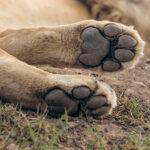

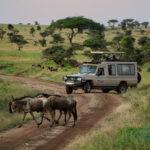
Experience Tanzania with us
Speak to one of our travel experts
Let's start planning your trip!
We will get back to you within 2 working days.
 on Tripadvisor
on Tripadvisor






